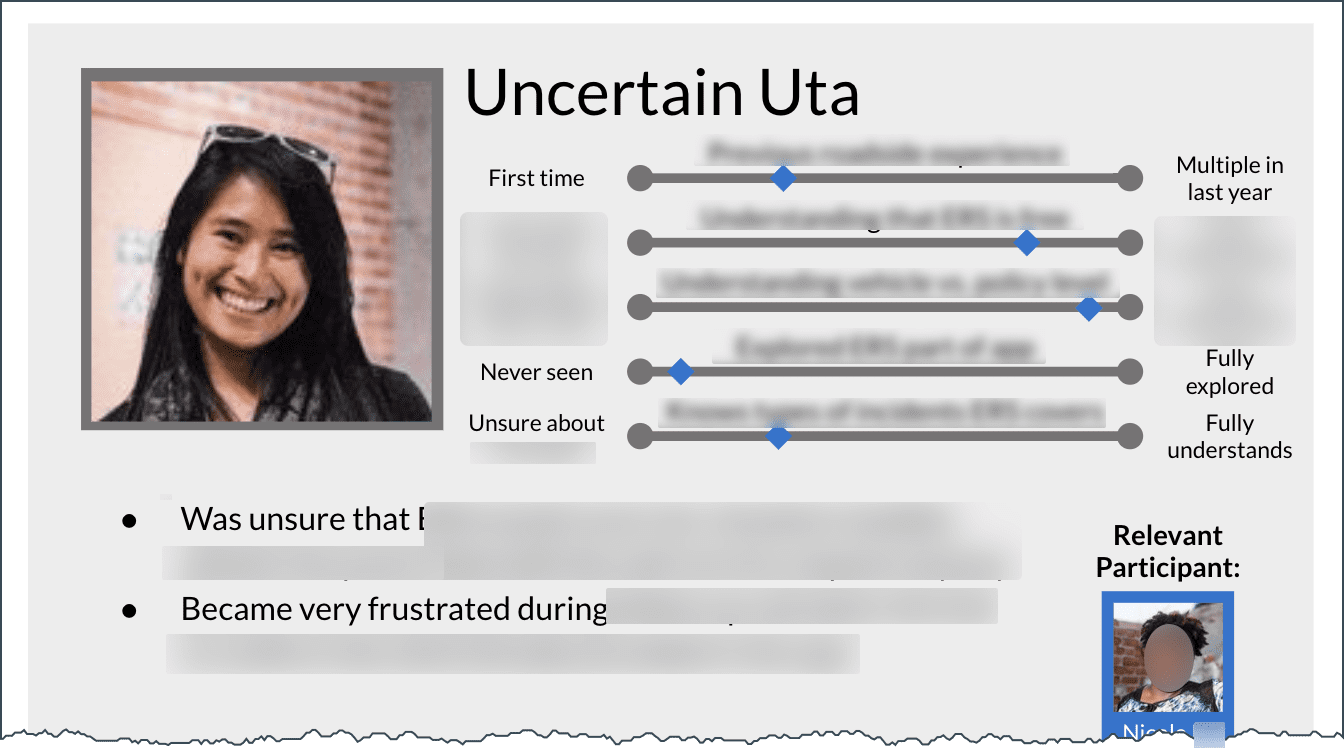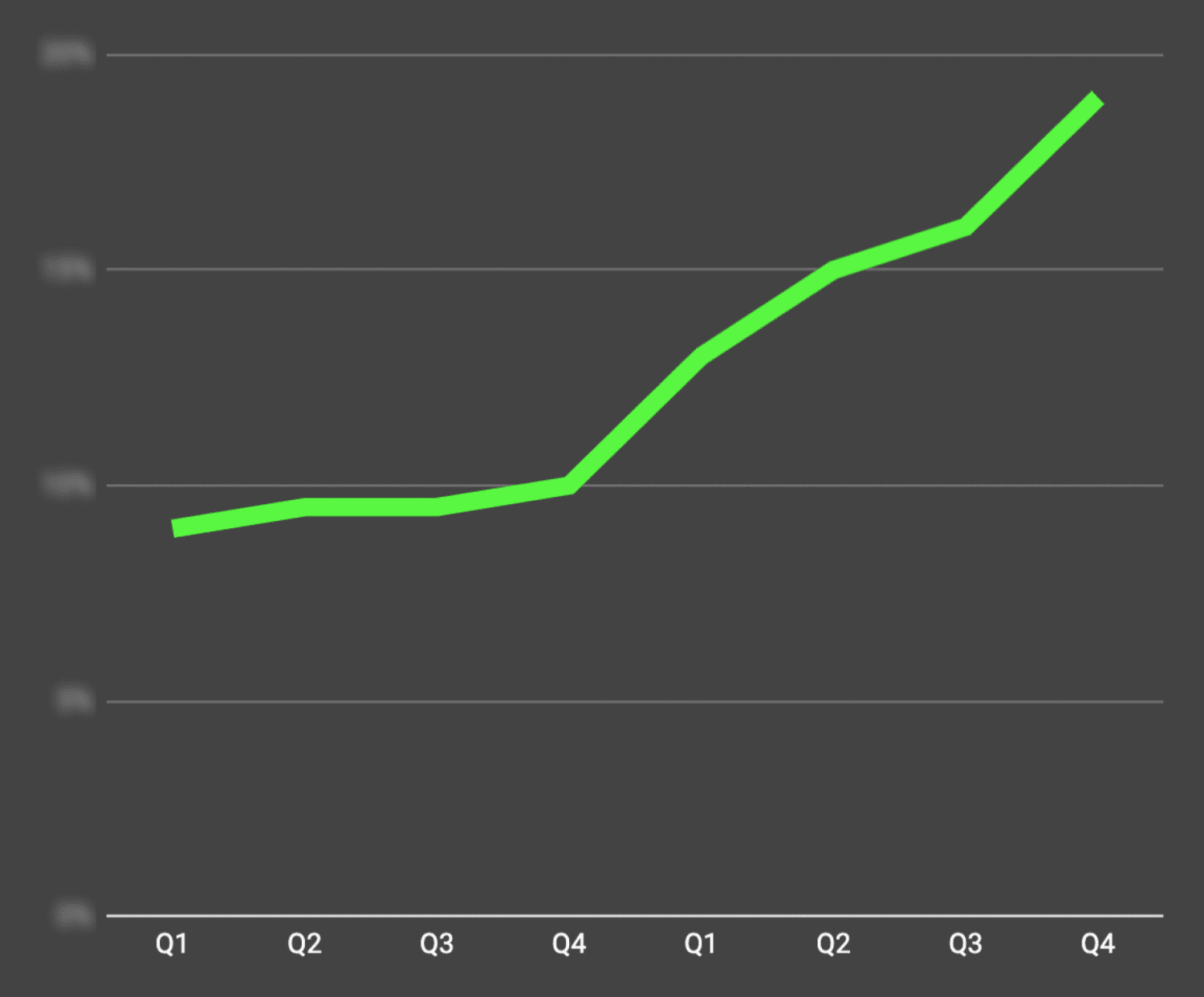Financial Services Case Study:
Using Research-Based Personas to Boost GEICO Self-Service
A GEICO team was trying to move the needle on self-service for an important transaction. They needed a tool to increase innovation and settle design debates. We interviewed 20 customers and created personas that grounded design decisions in research.

Goals
For years, GEICO has focused on increasing digital self-service for its customers. Across many products, services, and transaction areas, the insurer has been able to reduce costs while improving the customer experience by making it easier to transact online.
Yet some GEICO products and transactions have been harder to shift than others.
Think about the products and services you use. Even if you prefer to interact digitally in most cases, can you imagine a unique, high-stress scenario where you’d likely call to get help from a person? Maybe your flight gets canceled last minute. Or your credit card gets stolen. Or your cable TV goes out before a big event.
It was one of these types of unique, high-stress customer scenarios that a few teams at GEICO were grappling with. Few customers used the self-service option; instead, they called and spoke with a customer service rep.
For a company with millions of customers, the business cost of this transaction was high and call center staffing was a challenge, especially during extreme weather events. Initial research suggested that many customers preferred to handle this interaction digitally. And many of those customers were starting online before switching to the phone channel. The teams wondered: why were so many customers abandoning self-service and calling?
GEICO was eager to make improvements that increased self-service adoption and completion for this transaction. Before jumping to solutions, they wanted to gain a deeper understanding of the common customer scenarios and the barriers to self-service.
Approach
GEICO partnered with Marketade to create research-based personas for this product transaction. This project was part of a larger, mixed-methods initiative that included multiple projects and experiments over a few years.
Here are some key steps of the process we followed to create useful personas:
1. Field Research
- 2 of our researchers spent a day at the primary GEICO call center handling these transaction calls.
- While there, we sat with 10 different reps while they took service calls.
- We “double-jacked” so that we could hear the full conversation and observe their process.
- When there was a break between calls, we asked interview questions.
- We also conducted 3 additional interviews — one with a service supervisor and 2 with other reps.
- These sessions gave us a great picture of the most common types of customers and scenarios.
- Among other things, this research helped greatly in defining the best customers to recruit for our next step …
2. Customer Interviews
- We recruited 20 participants for in-depth interviews, covering various segments — customers who had purchased this product and those who did not, customers who recently completed the relevant transaction and those who did not, GEICO and non-GEICO users, phone and mobile users.
- We wrote slightly different moderator guides and questions for each segment.
- We conducted 20 one-on-one interviews remotely. One of our researchers moderated the interviews while another researcher observed and captured notes.
3. Survey
- We designed and conducted an 8-question survey of 150 GEICO customers.
- The survey explored 2 early insights from our qualitative research: many people were not aware of a self-service option for this transaction; many people were not sure if they had the product.
- The survey allowed us to validate and quantify these findings, among other things.
4. Initial Analysis
- We started by writing a 1-page summary of each interview. Each page was divided into 6 sections that included journey steps, pain points, and reasons for using self-service or phone.
- We note key patterns across the in-depth interviews.
- We also identified key findings from the field research and survey.
- Next, we identified 3 major problem areas or barriers to self-service.



An excerpt of a 1-page summary of a customer interview. Our summary pages included 6 sections and helped us to see patterns and differences among participants — a critical step as we started to create personas.
5. Persona Generation
- Our 2 researchers used a variation of Jared Spool’s “LiRPPS” approach to create the personas.
- We selected those customers (interviews) who were most relevant based on the 3 problem areas.
- We created and prioritized a list of behavioral differences and other differences between the customers that were most relevant to the problem areas. For example, was this their first time completing this kind of transaction or had they done it before?
- Based on these differences, we created 3 distinct primary personas as well as 3 secondary personas.
- For each persona, we identified a “most relevant participant” — the actual customer we’d interviewed that most resembled the persona — while noting that each persona drew from multiple participants.



An excerpt of a secondary persona from this project. The scales in the upper right show the key behavioral differences among the personas.
Impact
In the months and years ahead, multiple teams used these personas to help ideate and design solutions for this product’s self-service challenge.
The personas helped to ensure that recommendations remained grounded in the research and were formulated with users in mind.
Over time, the personas helped teams to achieve a number of wins that led to increases in self-service — along with cost reductions and a better customer experience — for this product.



About the Project
- Industry: Financial services
- Audience type: Consumers
- Research area: Discovery
- Methods/tools: Personas; user interviews
- Length: 4 weeks
- Primary stakeholder: Product and UX teams
- Company size: Over 25,000 employees
- Company headquarters: Chevy Chase, Maryland
More Case Studies
Creating Research-Based Personas for Herman Miller
We conducted 10 contextual interviews with customers of Herman Miller’s Design Within Reach furniture brand. Later we facilitated a 1-day workshop to generate personas and innovation opportunities.
How Tonal Turned Customer Journey Mapping into a Team Sport
A fitness tech company visits its customers’ homes to gain a deep understanding of their needs — paving the way for actionable personas and journey maps.